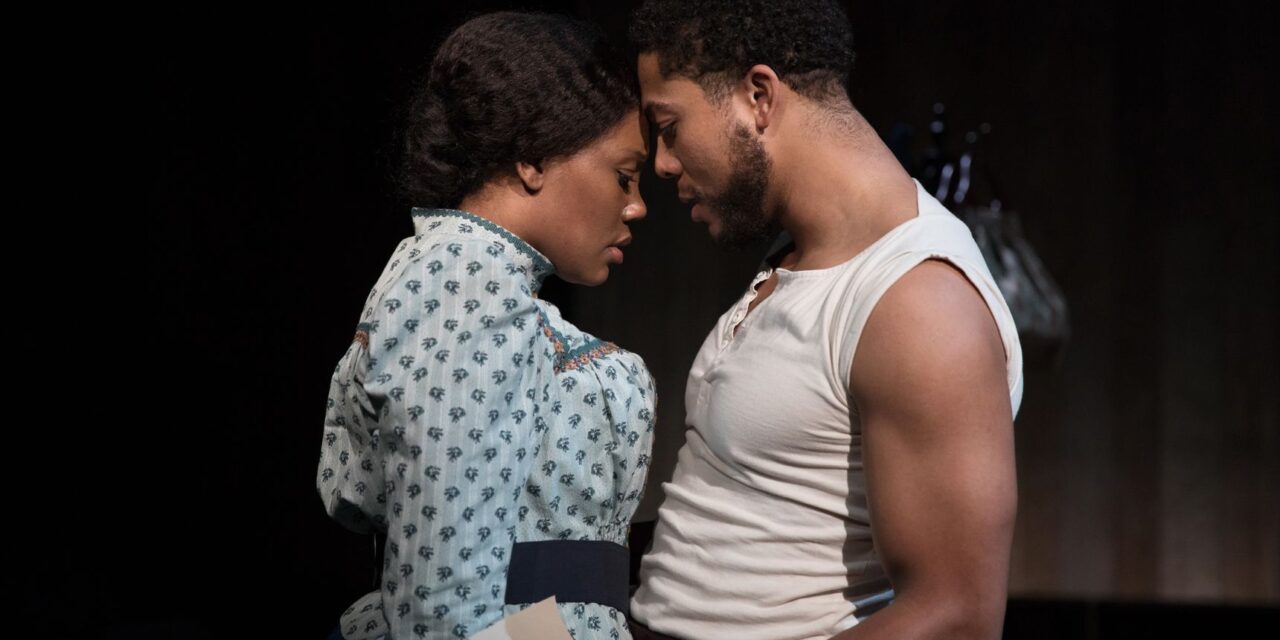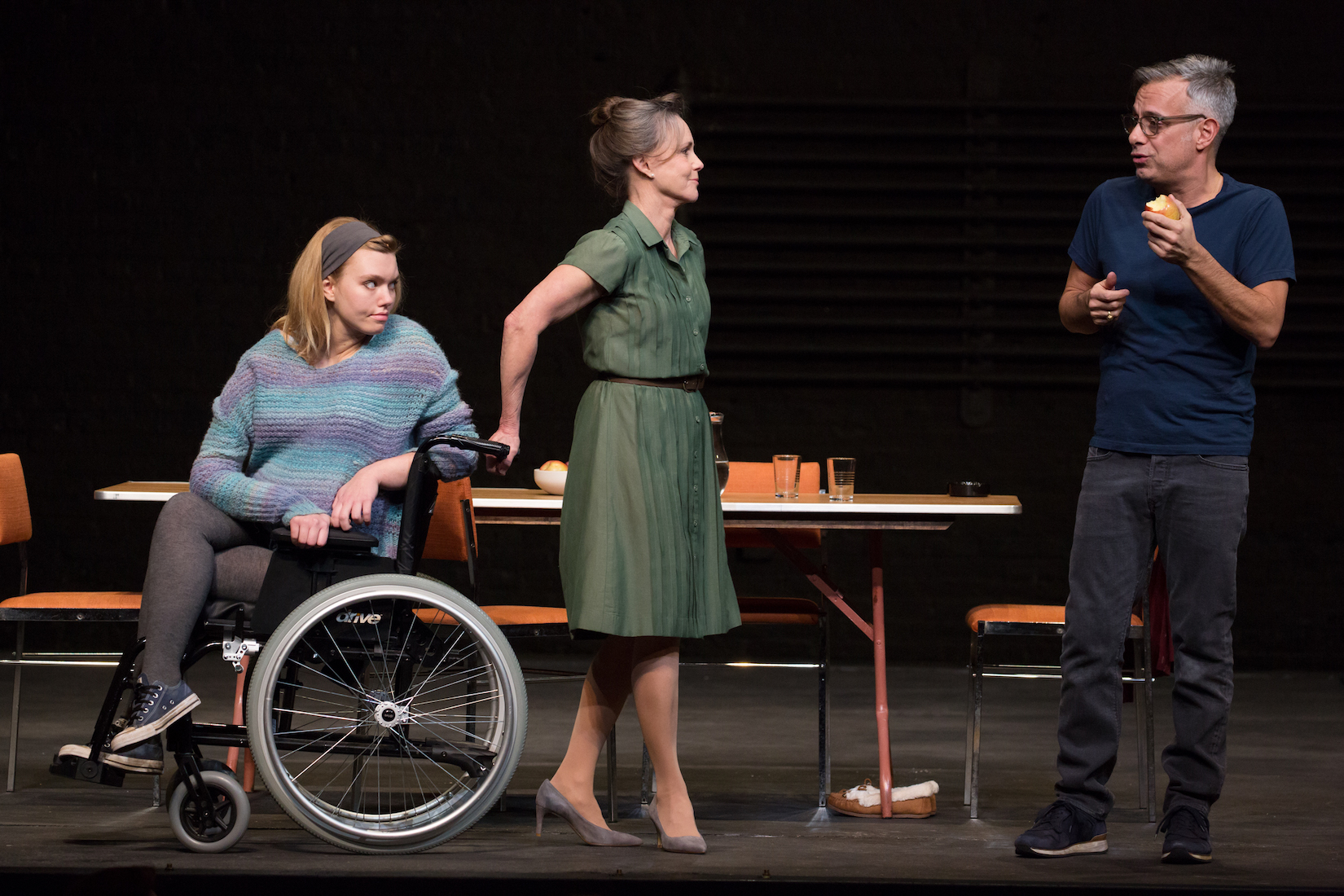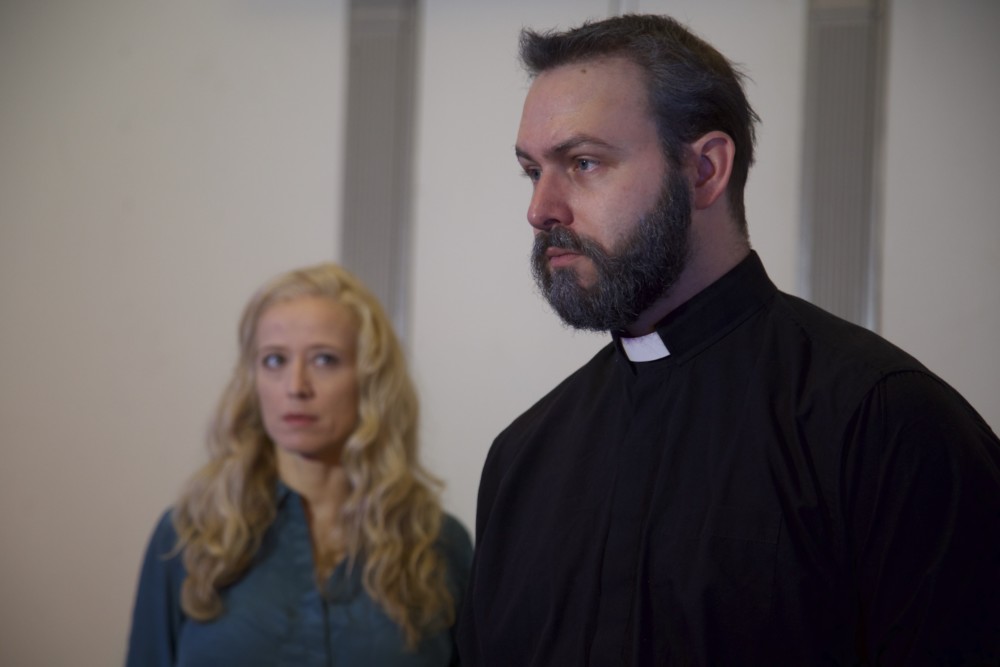By Carol Rocamora . . .
Where do we begin talking about the landmark production of Intimate Apparel at the Mitzi Newhouse Theater? By saying that it’s a passionate musical adaptation of a 2004 play by an important American playwright? That it’s a part of a thrilling commissions partnership between The Metropolitan Opera and Lincoln Center Theater to stimulate the growth of new American opera? That it features a brilliant cast of operatic singer/actors, almost all of color, equally skilled in both arts? That Bartlett Sher distinguishes himself, yet once again, as one of our finest living directors of both plays and operas?
We’ll get to all that in due time…
Let’s begin instead with a photograph.
Projected on the screen at the end of Act II, there’s a giant replica of a vintage photo, entitled “Unidentified Negro Seamstress, 1905.” It’s a stunning image, powerful and haunting. Who is that woman? What is her story? Playwright Lynn Nottage wanted to know, and in turn, she wants us to know. That photo, as she tells us in the program notes, is why she wrote the original play. And after you hear the powerful story behind it, that photo will remain with you too, vividly, in your theatergoing memory.
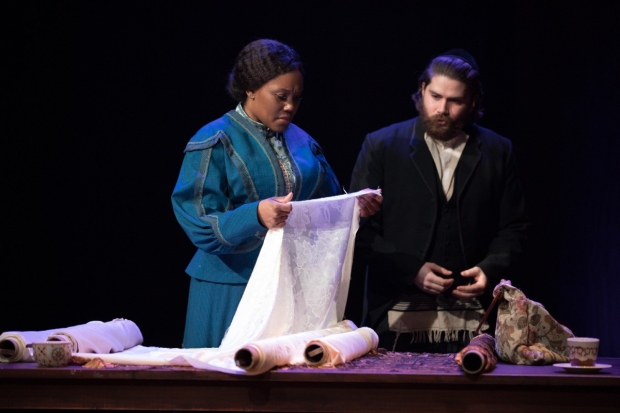
Nottage brings that anonymous young woman to vivid, passionate life in Intimate Apparel; A New Opera. Esther, as Nottage calls her (played by Kearstin Piper Brown), is a young 35-year-old Black seamstress working in Manhattan in 1905. Lodging in a boarding house along with other women under the watchful eye of Mrs Dickson (Adrienne Danrich), she sews elegant undergarments for women from all echelons of society. A skilled and hard worker, Esther is determined to improve her life and become an independent woman. Year after year, she sews her earnings into a quilt to pay for a beauty parlor. She’s liked by her customers – from Mrs. Van Buren (Naomi Louisa O’Connell), a society diva, to Mayme (Krysty Swann), a popular courtesan in a lower Manhattan brothel.
But Esther has a fear – of being alone. So she enters into a pen pal correspondence with George Armstrong (Justin Austin), a laborer working in Panama, and falls in love with the idea of becoming his wife. (Her letters are penned by Mrs. Van Buren and Mayme, since Esther cannot read or write). But when George finally arrives in New York and they marry, she discovers his prideful, irresponsible nature and adulterous behavior. Esther faces an agonizing decision: does she give George her earnings saved over the years to help him with his own professional dreams, or keep them to follow her own? Therein lies her crucible in this compelling drama.
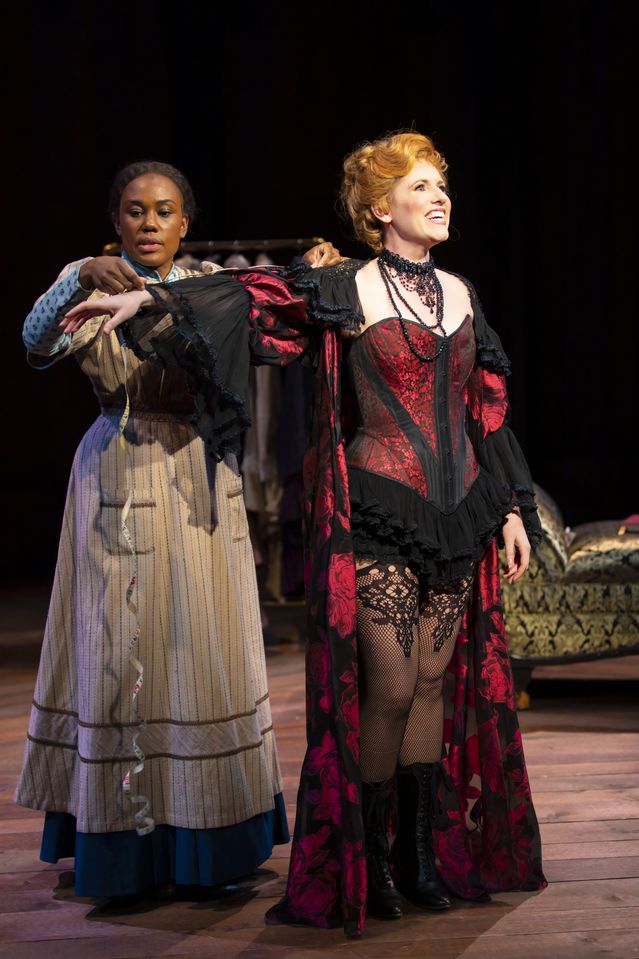

By adapting her play into an opera, Nottage has not only deeply enriched her play, but she’s also elevated it to the status of an important historical work, contributing to our appreciation of what it meant to be a Black woman circa 1900 in America. As her research revealed, their lives were almost completely undocumented – the above-mentioned photo is one of the treasures of the period. Nottage puts a name on that woman’s face, and lifts her story up, as an important one in understanding that chapter in American history.
Moreover, Intimate Apparel offers a socioeconomic profile of Manhattan, c. 1905, peopled with characters of different classes, backgrounds, and races. Though Nottage’s focus is on the women of the time period, she also offers portraits of others, including a young dry goods store owner, Mr. Marks (Arnold Livingston Geis), a Hasidic Jew who sells Esther fabric for the garments she makes for her customers. Her visits to his shop and the joy they share over a particular piece of cloth are some of the most memorable and moving moments of the show.
The result is a rich tapestry of Manhattan at the turn of the twentieth century. As for the glowing production, Michael Yeargan’s masterful set features a turnstile that allows the 15-member ensemble to segue seamlessly from scene to scene – from Mrs. Van Buren’s boudoir to the brothel to Mr. Marks’s shop and so on. When they are not performing, cast members sit upstage, their dark figures silhouetted against the backdrop. The effect is a stunning profile of Manhattan, revealed before our eyes.
Bartlett Sher, acclaimed director of many Metropolitan Opera and Lincoln Center Theatre productions, brings his considerable skills and experience to this lovely new work, infusing it with a swift pace and beautiful movement (choreography by Dianne McIntyre). Overhead, designer Yeargan has suspended two platforms, each featuring a grand piano upon which musicians play Ricky Ian Gordon’s energetic score (highlighted by strains of ragtime).
Intimate Apparel is an important and memorable new opera, thanks to the inspired collaboration between the Met’s Peter Gelb and LCT’s André Bishop, who have pledged to enrich American opera by commissioning new work. (According to the program notes, in1980 there were three new American operas; by 2018, there were forty-two).
Meanwhile, as they say, a picture is worth a thousand words, and Lynn Nottage has given more than that to “Unidentified Negro Seamstress.” That woman now has a name, and a permanent place in the canon of American drama.
Intimate Apparel, a new opera, music by Ricky Ian Gordon, libretto by Lynn Nottage, directed by Bartlett Sher at the Mitzi E. Newhouse, Lincoln Center Theater, through March 6.
Head Photo: Julieta Cervantes


